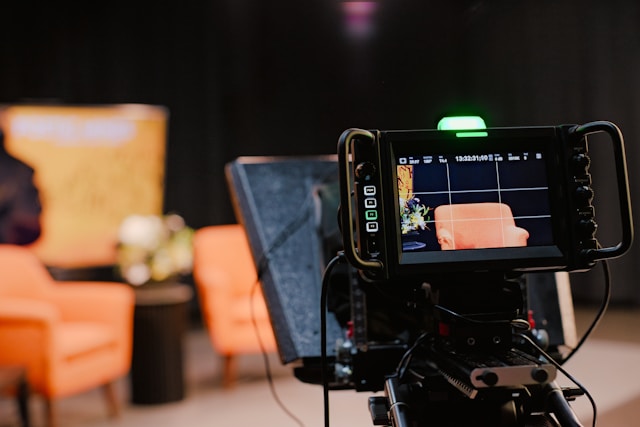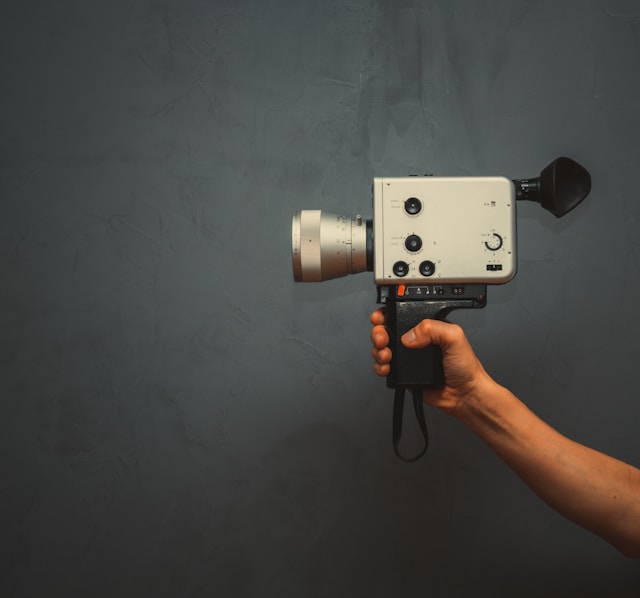For years, glossy brand films ruled the screen: perfect lighting, pristine sets, carefully scripted lines. They still have a place, but they don’t always win hearts (or watch time). In 2025, audiences scroll past anything that feels overproduced or inauthentic. They want to hear from people who look and sound like them, shot on the same phones they use every day.
That’s why user-generated content (UGC), especially video, is outperforming traditional brand creative across awareness, engagement, and conversion.
The Shift from Polished to Real
This isn’t a fad; it’s a behavior shift rooted in video marketing psychology and social dynamics. When real customers tell real stories, they trigger credibility, relatability, and emotion: the core ingredients of emotional video marketing. The kicker? Video UGC is not just “cheap and cheerful.” It’s a strategic asset you can plan, prompt, moderate, and deploy at scale across paid, owned, and earned channels.
Below, we break down why UGC works, which formats move the needle, how brands are evolving toward a lo-fi video strategy for brands, and the playbook to launch your first campaign. If you’re ready to operationalize it, here’s how BrandLens helps brands collect and use video UGC at scale.
What Makes UGC So Powerful in Video Marketing?
UGC resonates because it speaks to something fundamental in us: the need for connection. But what’s behind its remarkable appeal? It’s a mix of things:
- It’s Relatable: UGC collapses the distance between the viewer and the storyteller. The visual grammar, such as handheld shots, ambient audio, and natural pauses, makes viewers think, “That could be me.” In cognitive terms, it reduces psychological distance and increases perceived similarity, both of which strengthen persuasion (that’s your video marketing psychology at work).
- It’s Emotional: Polished ads are great for product theater. UGC is great for resolving human signals like surprise, relief, joy, and frustration. Those unscripted micro-expressions carry emotional weight, a critical driver of memory encoding and action in emotional video marketing. Read about the emotional and psychological triggers behind UGC’s effectiveness for some exceptional insights.
- It’s Credible: People trust peers more than logos. The 2024 Edelman Trust Barometer shows peers are among the most trusted sources of information; brands that earn trust see higher purchase, loyalty, and advocacy. That’s the foundation of consumer trust and video content, and why social proof in video marketing is so powerful.
- It Performs: Across platforms, UGC routinely out-engages brand-produced creative. A widely cited 2024 data point: on YouTube, UGC videos can attract up to 10× more views than branded videos, underscoring how audiences reward authenticity. Directionally, the takeaway is consistent: real voices scale attention.
- It Fits the Way We Now Watch: Short-form feeds and “lean-back” Connected TV (CTV) environments both amplify creator-driven video. As viewing shifts to creator content on larger screens, brand teams are remixing UGC for TV-like placements, not just social feeds.
Want to go deeper into the psychology? Explore the key UGC video types that deliver results.
Examples of UGC That Drive Video Marketing Success
UGC isn’t one thing; it’s a toolbox. Here are proven formats and why they work.
Testimonial Clips
- What They Are: Customers explain a problem they had, what they tried, and how your product helped.
- Why They Work: They compress the entire journey: pain point to solution to outcome into 30-60 seconds. Hearing a peer’s voice activates social proof in video marketing and primes action.
- Tips: Prompt specifics (“How many hours did you save?” “What changed in week one?”). Specifics beat superlatives.
Reaction/First-Impression Videos
- What They Are: Unboxings, try-ons, first use. Often shot in one take.
- Why They Work: Real-time emotion and expectancy violation (“Whoa, that was faster than I thought”) are sticky moments in emotional video marketing.
- Tips: Use simple prompts: “Film your first 10-15 seconds of use.” Ask for a “before” clip if possible.
Before-and-After/Progress Stories
- What They Are: A sequence of quick cuts showing change over time (skin care, fitness, productivity dashboards, home DIY).
- Why They Work: Visual transformation satisfies curiosity and provides evidence.
Behind-the-Scenes (BTS)/POV Clips
- What They Are: Employees or customers show process, setup, or a day-in-the-life with your product.
- Why They Work: They humanize your brand and invite viewers into your world. Great for recruitment and brand affinity: key pillars of brand loyalty through UGC.
Challenge Responses/Event Recaps
- What They Are: “Show us your best recipe using X” or “Record your reaction at the finish line.”
- Why They Work: Participation creates identity signals and belonging, fueling organic reach.
Mini-Case: Wellness Brand Landing Page Lift
A mid-market wellness brand used BrandLens to place QR codes inside product packaging and at retail endcaps, inviting buyers to “Share your journey in 20 seconds: what changed after week 2?” In two weeks, they collected 100+ short testimonial clips and reaction videos. After light moderation and subtitling, the brand embedded a rotating UGC reel atop the product landing page and repurposed a 15-second cut for paid social.
Result: 40% higher CTR to checkout and a measurable lift in assisted conversions compared with the prior brand-produced hero video. See more ways to apply this approach in solutions for using real customer videos across industries.
Why Brands Are Moving from Polished to Lo-Fi Content
Let’s clear a misconception: lo-fi doesn’t mean low quality. It means low friction for creators (and your team), high frequency, and high relatability. In practice, that translates into faster production, more creative testing, and a content library that sounds like your customers because it is your customers.
Three reasons the market is shifting:
- Speed and Scale: Your brand doesn’t need five weeks of pre-pro to test 10 hooks. With a lo-fi video strategy for brands, you can prompt, collect, and iterate in days, even hours. Lo-fi UGC lets you run more creative bets, faster.
- Authenticity and Trust: Creator-style footage signals “real” in a feed full of ads. Multiple 2024-2025 analyses point to authentic, unpolished aesthetics outperforming high-production creative, particularly in social environments where native, peer-like content blends in and grabs attention.
- Community and Emotion: When you invite customers into the story, you’re not just generating assets; you’re deepening identity and belonging. That co-creation flywheel is how you build brand loyalty through UGC over quarters, not just short-term campaign spikes. Edelman’s 2024 special report ties trust directly to loyalty and advocacy, reinforcing why sustained UGC programs pay compounding dividends.
For a strategic overview of this shift, read why brands are shifting toward authentic, lo-fi video storytelling.
UGC vs. Branded Content: What the Data Really Says
The smartest marketers don’t ask “UGC vs. branded content?” They ask, “When does each format win?” Branded films are still excellent for product education, regulated claims, and flagship brand moments. But when the brief is trust, relatability, or high-velocity creative testing, UGC tends to outperform.
- Reach & Discovery: As mentioned above, creator-style videos often earn stronger view velocity in social feeds; multiple reports in 2024-2025 show UGC on YouTube dramatically out-viewing brand uploads up to 10× in some analyses. Your mileage varies by category and creative quality, but the directional signal is clear.
- Persuasion & Recall: Peer voices and “lived experience” clips increase credibility, a key lever in video marketing psychology and a reason UGC-based ads often see better click-through and lower acquisition costs in performance testing.
- Trust & Loyalty: Brands that consistently show (not tell) through customer stories reinforce trust flywheels; purchase, repurchase, advocacy.
Bottom line: build a mixed portfolio. Use brand creative to set the stage and UGC to carry the chorus.
How to Get Started with Video UGC (Step-by-Step)

Ready to jump into the world of user-generated video? Here’s how to launch a killer campaign with a significant increase in engagement with UGC:
- Define the Mission and the Metric
Pick one primary objective and one primary KPI (e.g., “10% lift in add-to-cart,” “2× watch-through rate vs. brand creative,” “collect 300 clips from first-time buyers”). Be ruthless about focus.
- Map Moments to Prompts
List the top 3 customer moments worth capturing (unboxing, first use, success milestone). Draft 2-3 prompts per moment with time targets (15-30 seconds), suggested framing (“show your hands,” “film the product in use”), and a reminder to speak naturally.
- Remove Friction from Capture
Use QR codes (packaging, retail, events), short links (email/SMS), and branded landing pages with one-tap recording. Keep it mobile-first.
- Streamline Rights and Moderation
Automate consent capture, centralize approvals, and create a “green-list” of pre-approved claims and a “red-list” of restricted topics. Tag assets by theme, hook, and funnel stage so the right team can find the right clip fast.
- Edit for Clarity, Not Perfection
Add burned-in captions, a progress bar, and a single CTA. Keep the raw emotion: the tiny imperfections are your authenticity markers in UGC vs. branded content tests.
- Distribute with Intent
- Paid: Test 5-10 hooks across audiences; rotate weekly winners; keep creative fatigue low with a weekly inflow of fresh UGC.
- Owned: Make UGC the above-the-fold hero on top product pages, FAQs, and post-purchase emails.
- Retail & CTV: Build 15-second compilations with fast labels (“Day 1,” “Week 2,” “Week 4”).
- Measure Like a Performance Channel
Track hook performance (first 3 seconds), hold (watch-through), click behavior (CTR), and down-funnel lift (Cost Per Click (CPC)/Cost Per Action (CPA), assisted conversions). Compare UGC cuts with brand creative to see where UGC leads and where a hybrid edit wins.
Need a jumpstart? Here are the key UGC video types that deliver results and a primer on how to start your first video UGC campaign successfully.
Governance: Keep It Brand-Safe Without Killing the Vibe
- Rights & Releases: Always capture usage rights up front (perpetual, paid, organic, global vs. regional).
- Claims & Compliance: Provide an internal checklist for product claims; route edge cases to legal.
- Diversity & Inclusion: Proactively source contributors across ages, backgrounds, and abilities to reflect your customer base.
- Accessibility: Caption everything. Consider audio descriptions for hero placements.
- Attribution: Credit creators where appropriate; invite them into future challenges.
Don’t Just Market; Co-Create
UGC has become the heartbeat of modern video marketing. It’s fast, flexible, and most importantly, human. In a world saturated with ads, real voices cut through. Done right, UGC blends emotional video marketing with measurable performance, turning your happiest customers into your most persuasive advocates. It’s how brands turn social proof in video marketing into durable outcomes: higher trust, stronger recall, better conversion, and lasting brand loyalty through UGC.
If you’re ready to operationalize UGC, collection, rights, moderation, editing, and cross-channel publishing, BrandLens makes it simple. Ready to bring real voices into your video strategy? Request a demo and see how BrandLens simplifies UGC video marketing.






